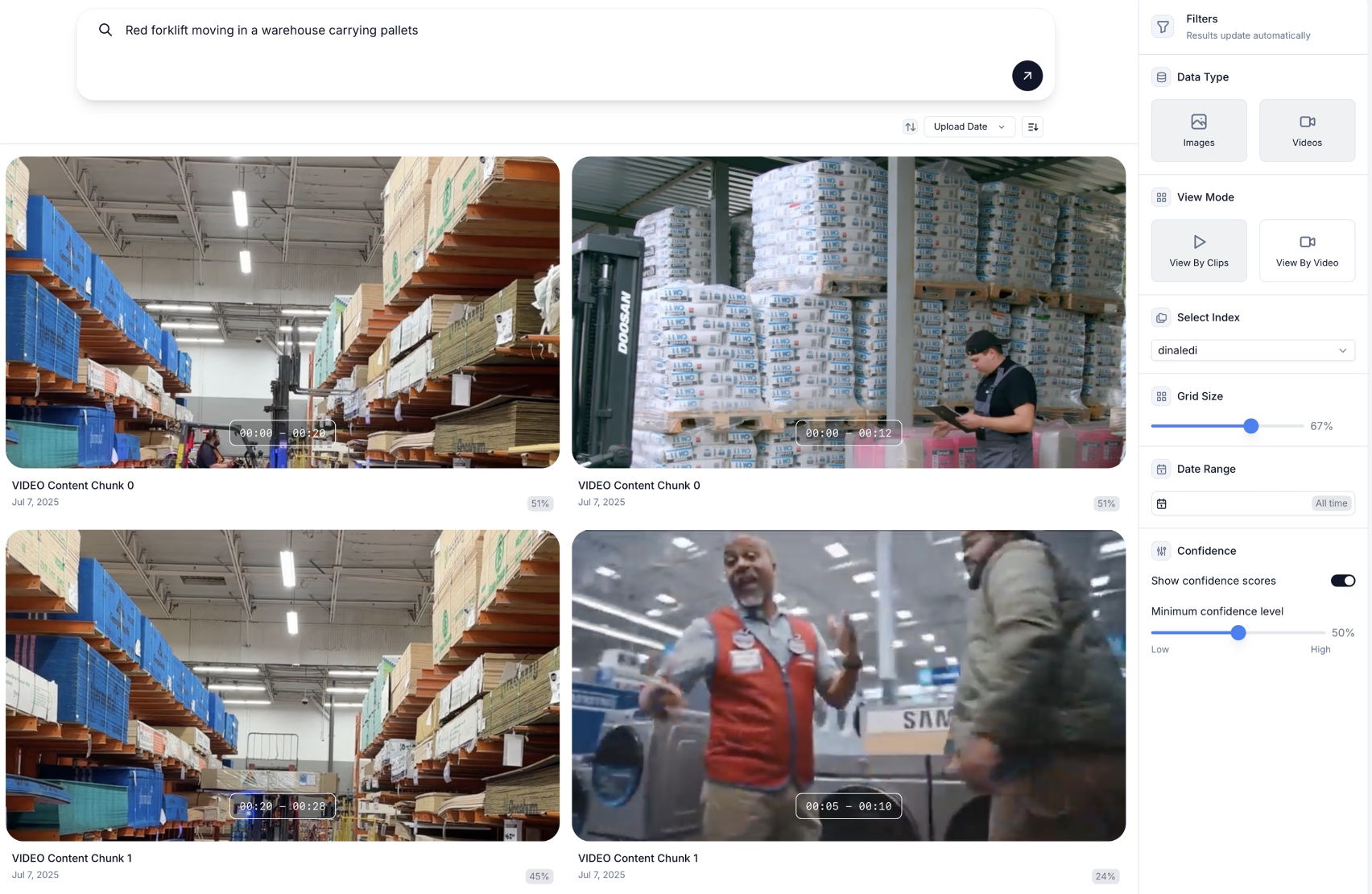Overview
Traditional search systems rely on metadata like filenames or manual tags, making it difficult to search through unstructured visual data. Ocular’s multimodal search solves this by combining:- Semantic understanding of visual content
- Natural language processing
- High-dimensional vector embeddings
- Hybrid retrieval system

Key Features
Natural Language Queries
Search using descriptive language:- “Person entering doorway at night”
- “Forklift near loading dock”
- “Red car in parking lot”
Cross-Modal Search
Find relevant content across different types of media:- Images
- Videos
- Documents
- Audio (transcribed content - coming soon!)
Semantic Similarity
Results are ranked by semantic relevance, not just keyword matching:- Understands context and meaning
- Finds visually similar content
- Groups related items together
Timestamp-Level Results
For video content, search returns specific timestamps where relevant content appears.How it Works
How it Works
1. Data Indexing
When data is ingested into the Catalog:- Content is analyzed by AI models
- Visual features are extracted
- High-dimensional embeddings are generated
- Metadata is processed and indexed
2. Search Processing
When you perform a search:- Your query is converted to a semantic embedding
- The system performs hybrid retrieval:
- Vector similarity matching
- Metadata filtering
- Relevance ranking
- Results are returned ranked by relevance
3. Results Display
Search results show:- Preview thumbnails
- Relevance scores
- Timestamps (for video)
- Associated metadata
- Quick actions for further processing
Using Search Effectively
Best Practices
-
Be Descriptive
- Use complete phrases instead of keywords
- Include relevant details about what you’re looking for
- Specify context when needed
-
Refine Results
- Use filters to narrow down results
- Sort by different criteria
- Save frequent searches
-
Leverage for Workflows
- Create indexes from search results
- Build datasets for training
- Identify patterns and anomalies
Example Queries
Good queries are descriptive and specific:Search capabilities are continuously improving as we add new models and features. Check the changelog for updates.